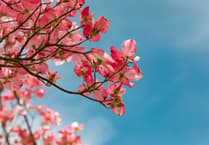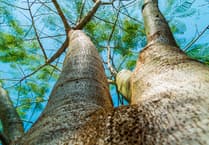Visitors can stay at a range of woodland retreats above the Wye Valley which can reconnect you with nature, at one of the many Forest pubs offering first class accommodation, at Whitemead Park, at the Speech House, the great 17th Century building at the centre of the forest, or you could go glamping at Whitemead Park, Parkend.
The Forestry Commission is not just a timber producing agency, but also promotes tourism. Their visitor sites at Beechenhurst and Cannop Ponds, with features like the Gruffalo experience and ‘Go Ape’, along with the Cyril Hart Arboretum and, the Sculpture Trail near the Speech House. The Commission maintains Forest footpaths and the picnic sites around Soudley Ponds and Cannop Ponds, and supports the archaeological site, the Darkhill Ironworks, near Sling, where the world’s first tungsten steel was produced and which had an important role in the development of the iron and steel industries in the 19th century. The site includes terraces of stone walls, tramways, brickworks, and ironworks. The Forestry Commission also manage the Dymock Daffodill trail, one of the local memorials to the famous Dymock Poets group who briefly flourished in the area just before the first world war.
The Dean Forest Railway, which was restored to run along the route of the old Lydney to Cinderford track, runs now from Lydney to Parkend through forestry land, and the Norchard station an Lydney station is now a visitor site even for non-rail travellers, and the level crossing at Hill Street Lydney is now in operation again. The old Hopewell Colliery is now in business again. You have to book in advance to visit the mine, but the adjoining café has a wealth of information about mining in the forest. Clearwell is worth a visit, with its caves which contain evidence of mining over 2,000 years, and the nearby Puzzlewood which is a popular film location with a similarly ancient history, a mysterious site with fantastic trees and pathways. The Birds of Prey Centre at Newent is sadly no more. Although a Youth Hostel Association site is not open to visitors, you may be able to persuade a member of staff at St Briavels Castle to let you see the remarkable historical features of this important mediaeval building.
There are about 100 pubs in the forest, all of which I have visited, but I suppose that the house in Moseley Green called the Rising Sun, the Saracens Head at Symonds Yat, the Glasshouse at May Hill (named for the Huguenot refugees from France in the 16th Century, fleeing religious persecution and bringing their glass making skills to May Hill), the White Hart at Broadoak, with balconies overlooking the river Severn and ideal for viewing the Severn bore, and the ancient Ostrich at Newland will be of interest to thirsty and inquisitive visitors. Further down the Severn, there is the thriving arts scene at Newnham, which has 3 art galleries promoting local artists, and the wonderful views of the Severn from ground level at Lydney harbour.
Grand views for our visitor are available at sites which include the Wye Valley from Wintours Leap by the B4428 at Woodcroft, which is a more accessible viewpoint of the wooded Wye valley than the Devils Pulpit on Offa’s Dyke, which needs a charming woodland walk from Tidenham or Brockweir. There are wonderful Severn valley views from elevated viewpoints at Littledean Hill Road in Cinderford or at Blaise Bailey, a Forestry vantage point requiring a short walk from the Newnham to Littledean road.
I suspect that many of these visitor and cultural attractions are not well known to Forest residents, and it took me many years to visit them all.




